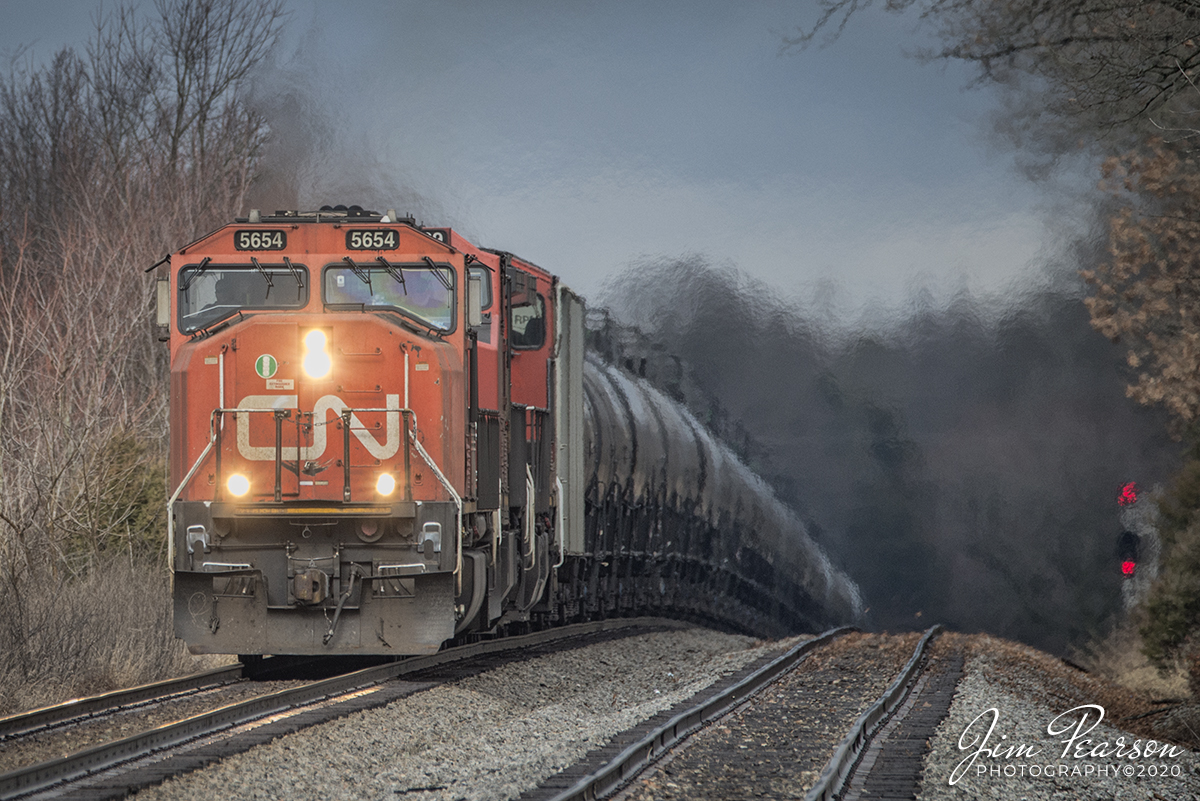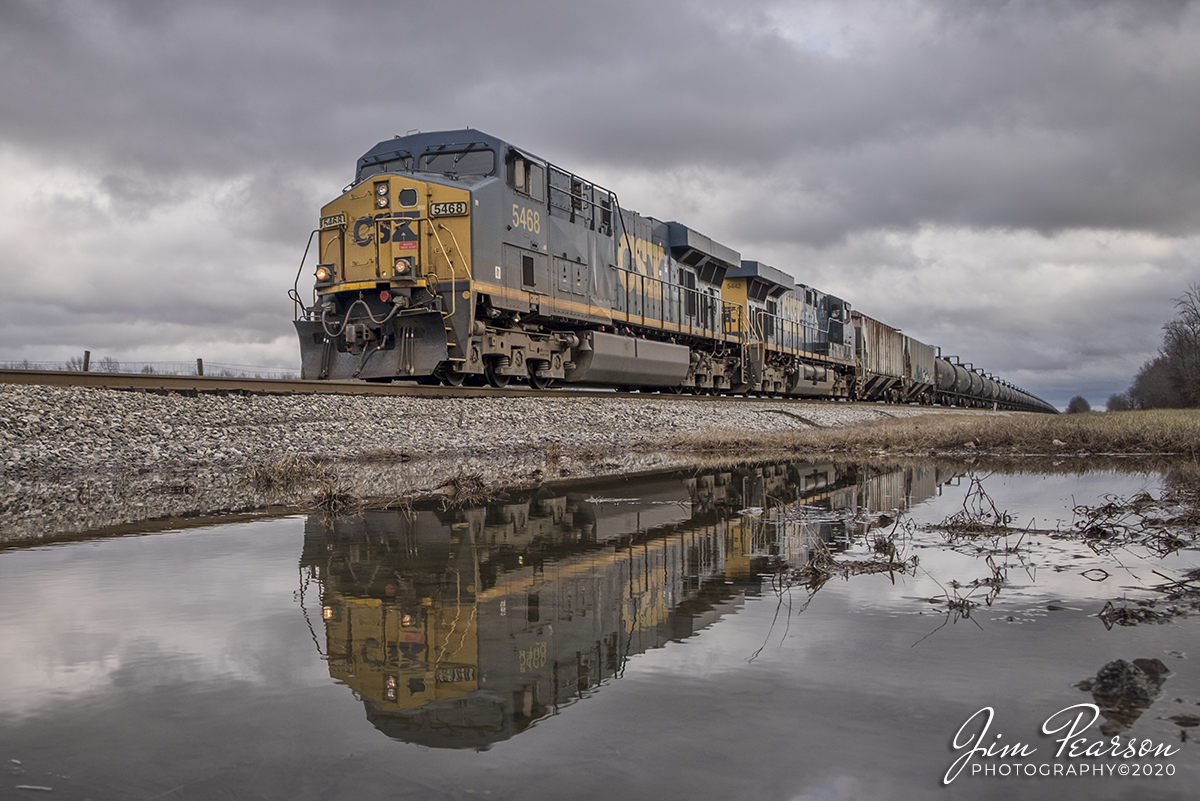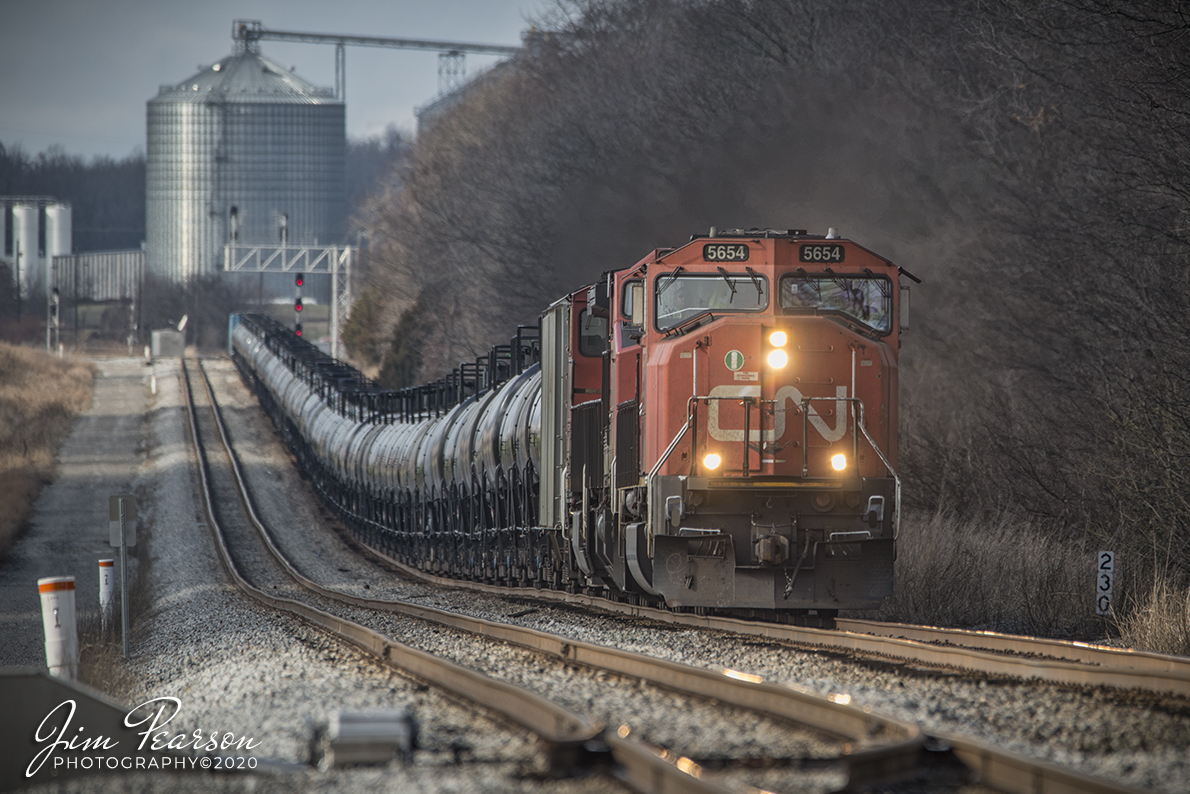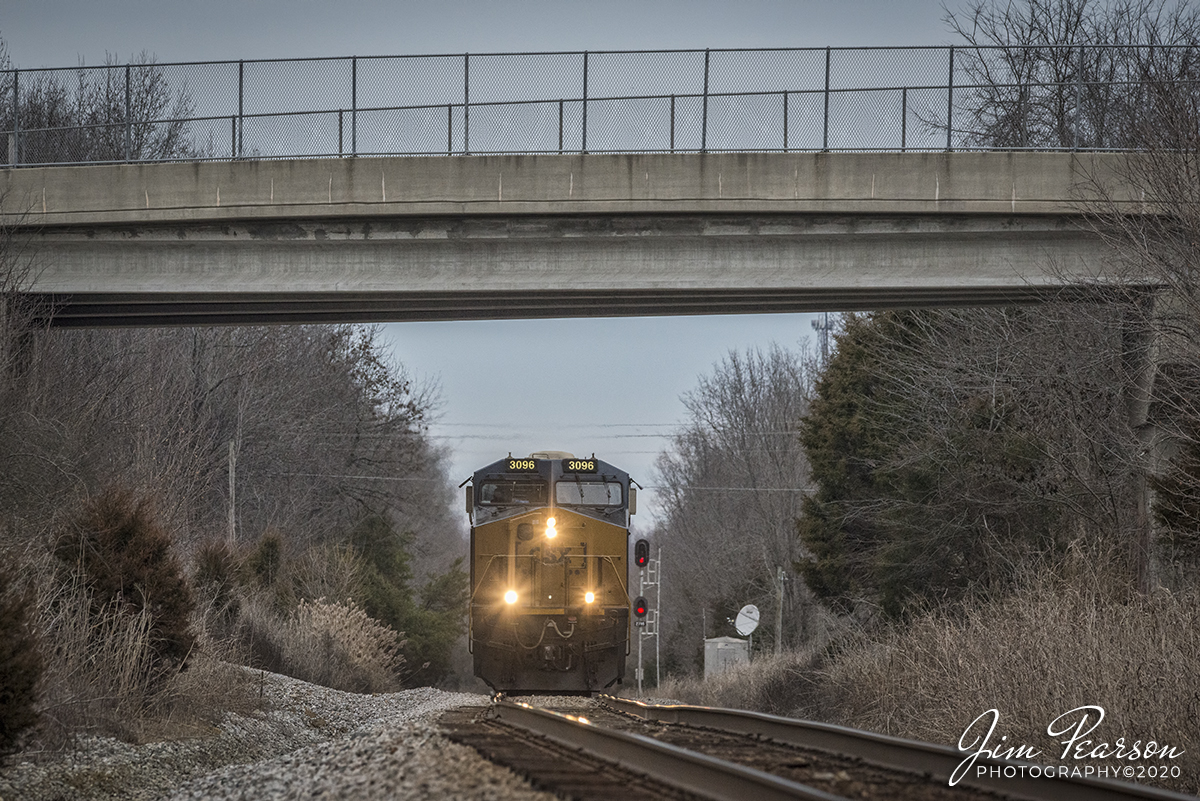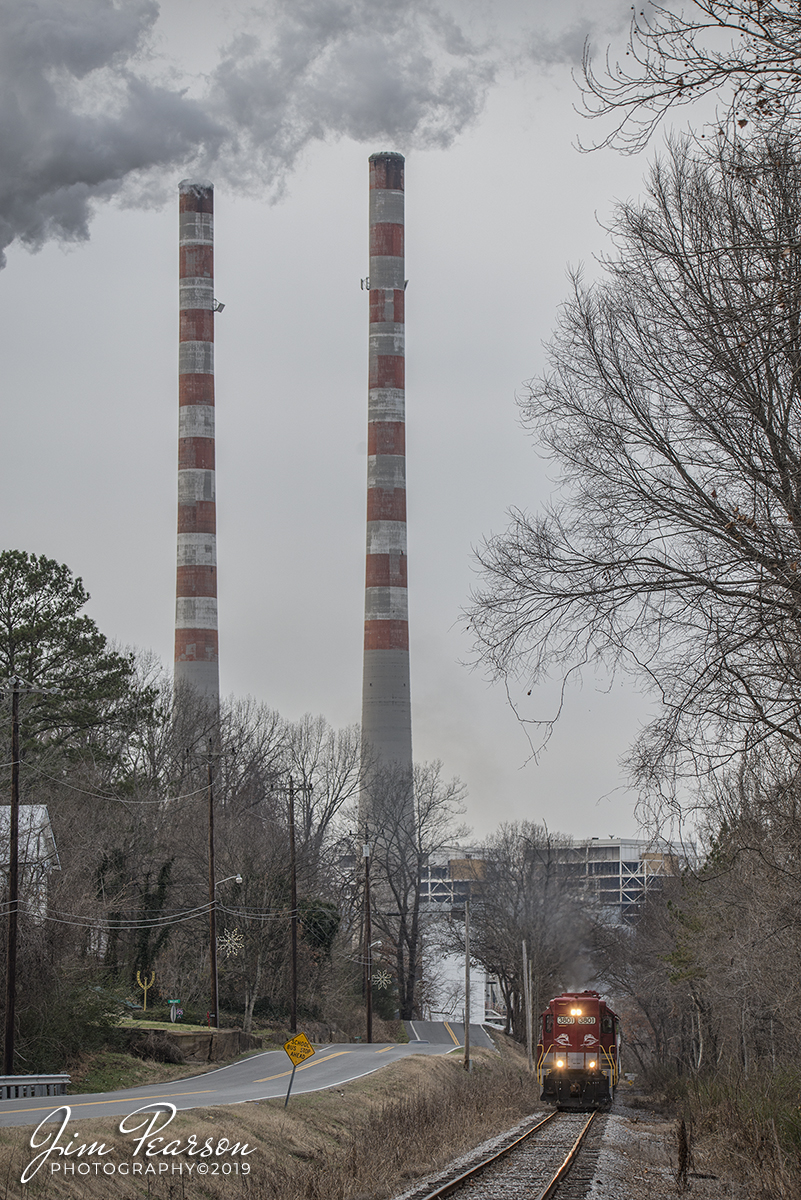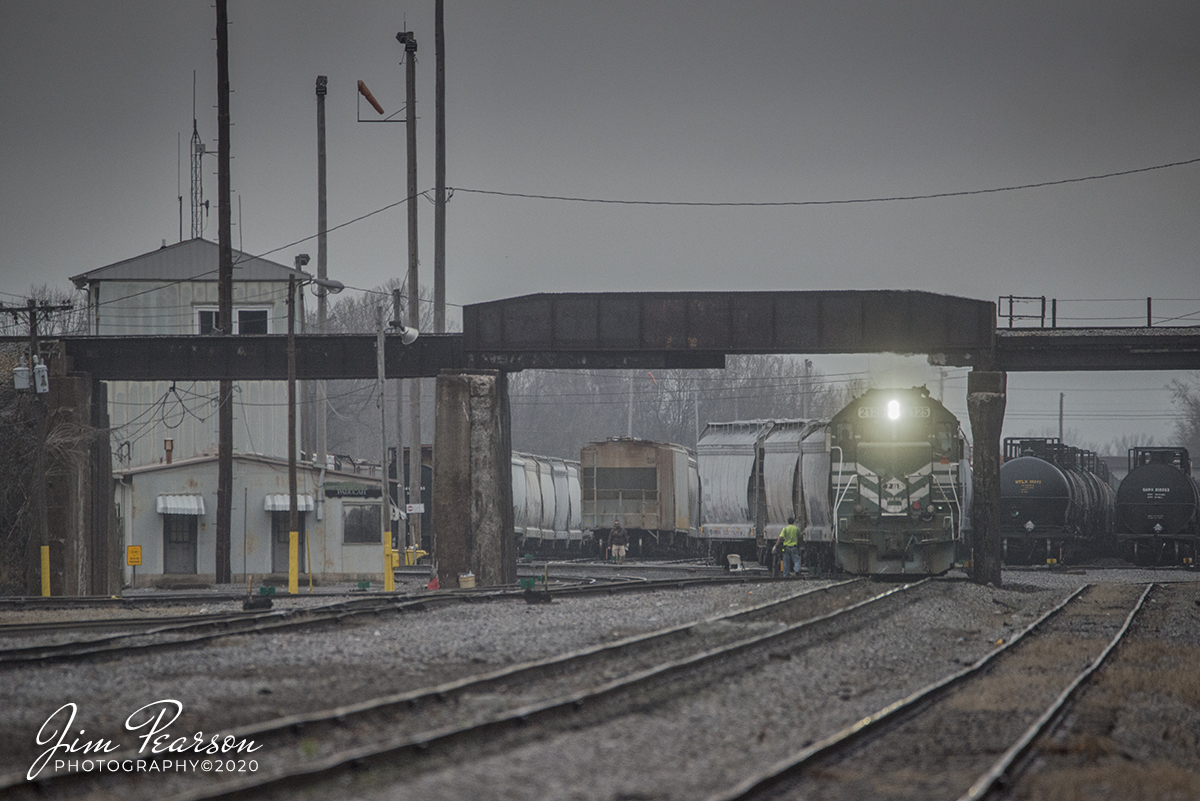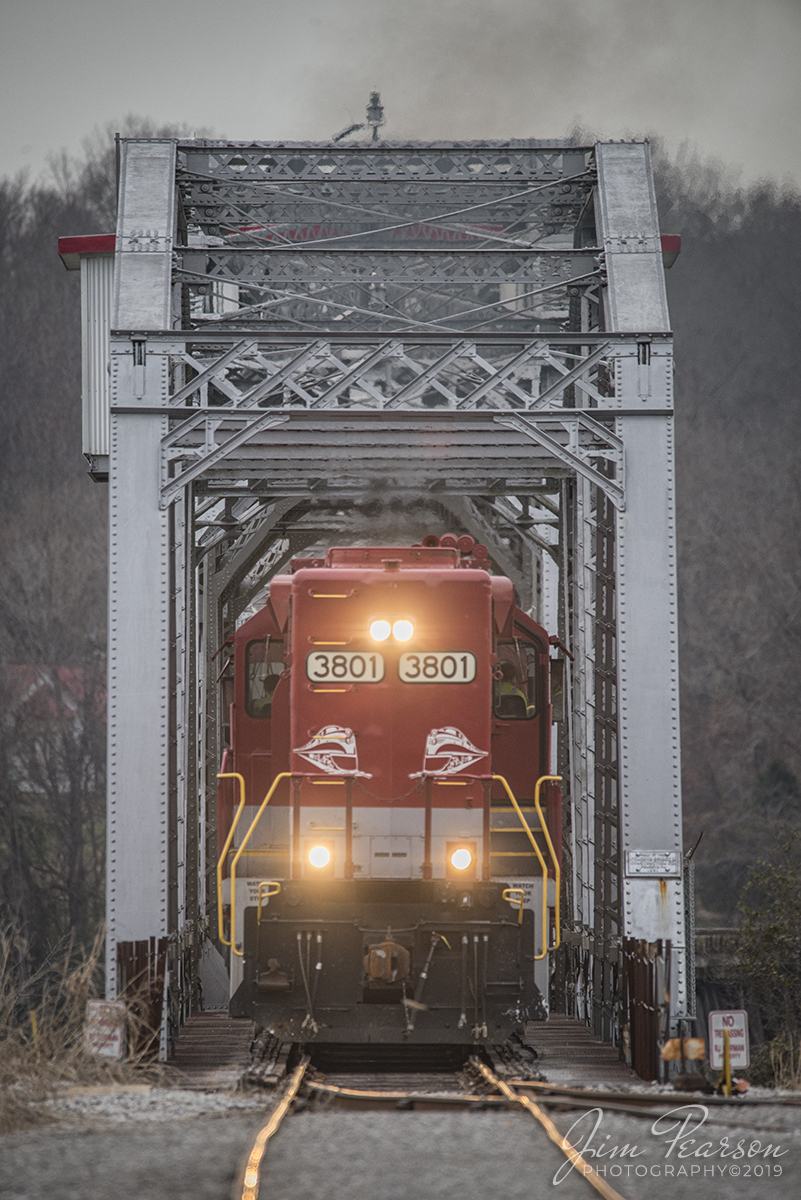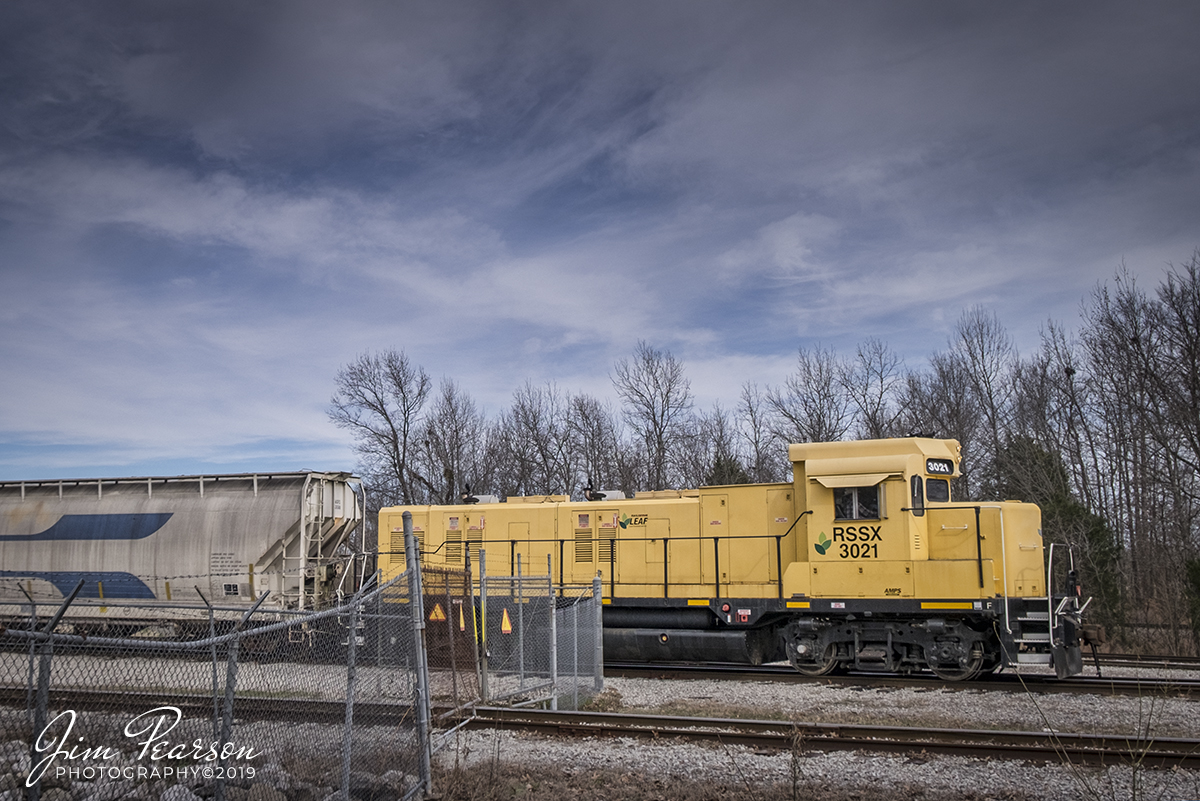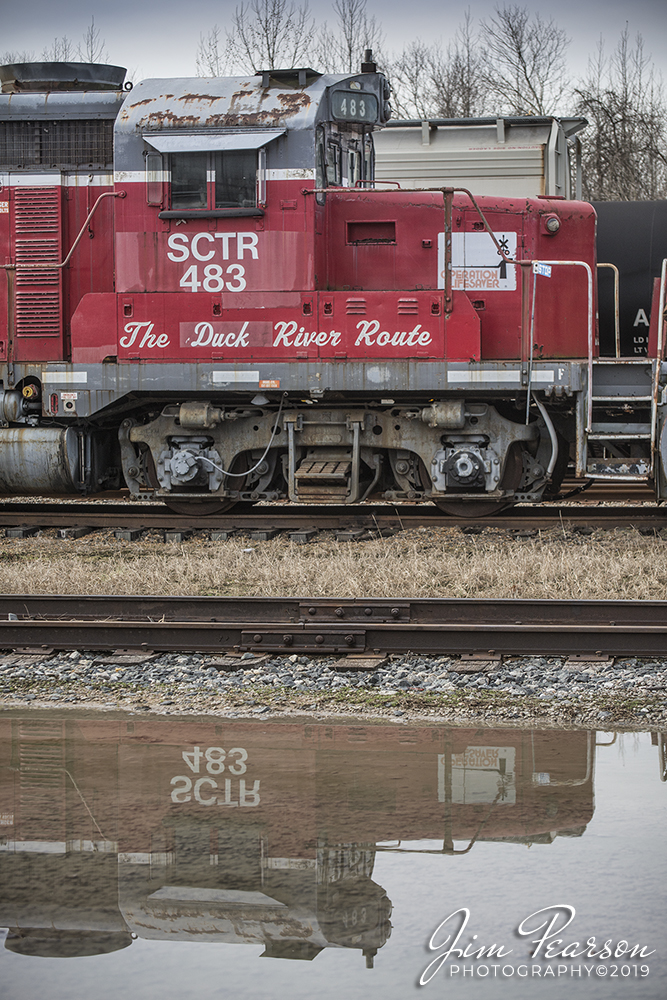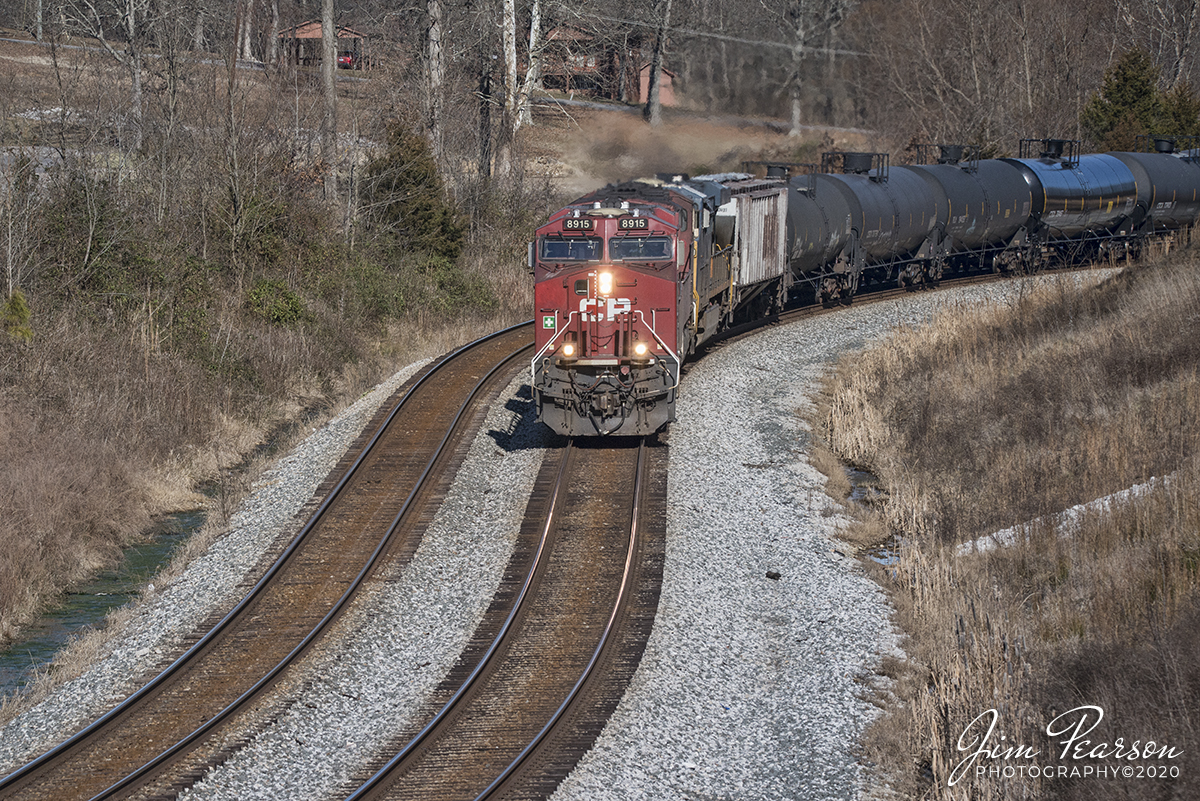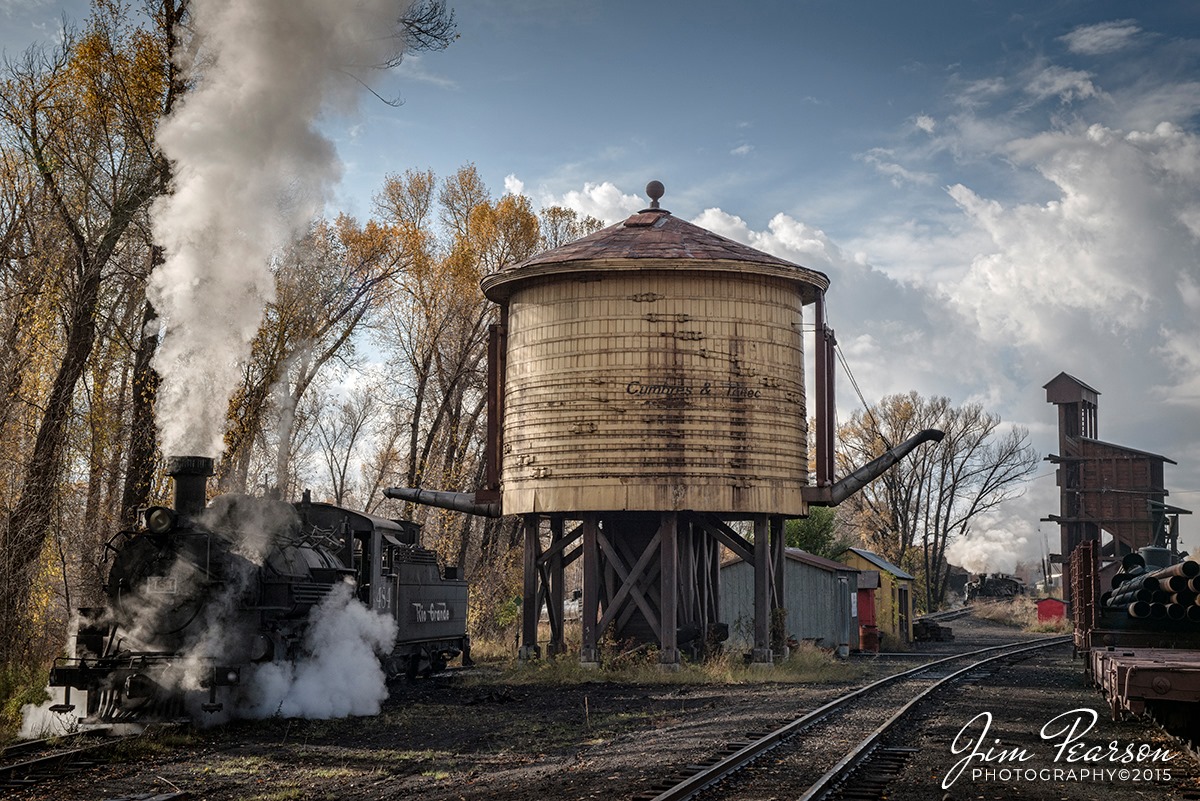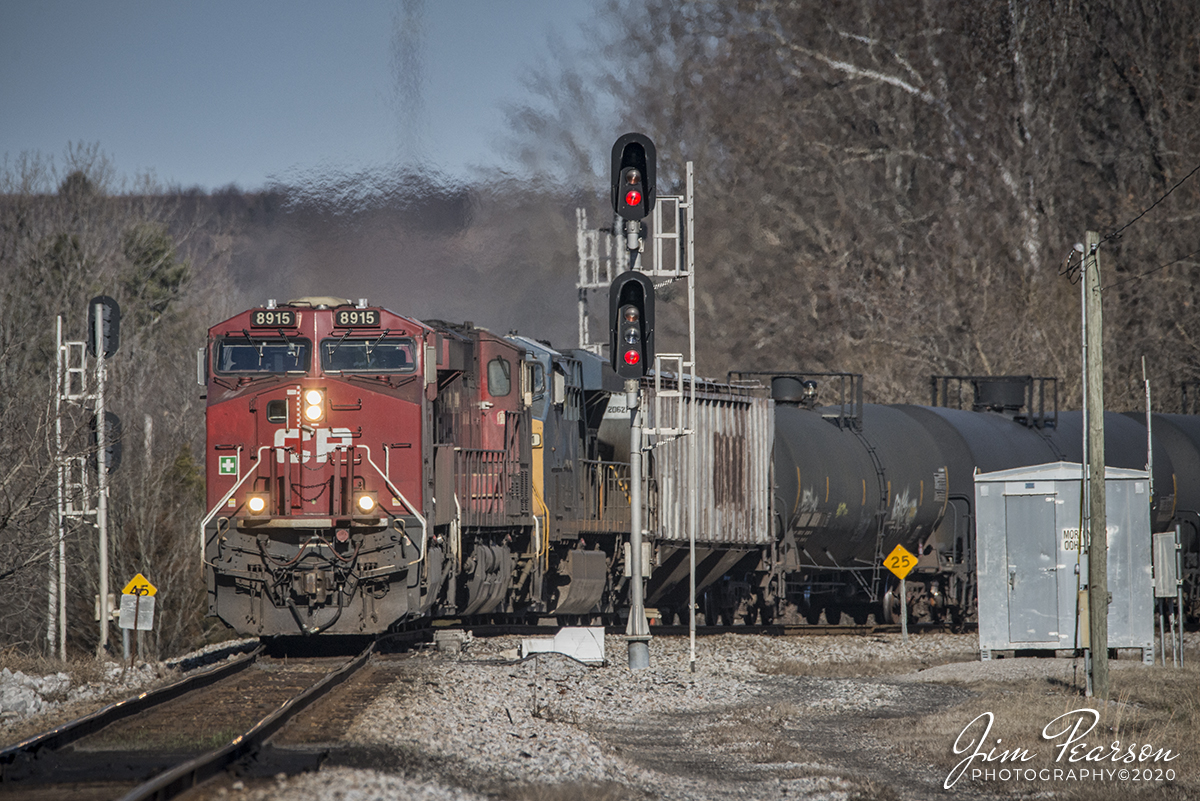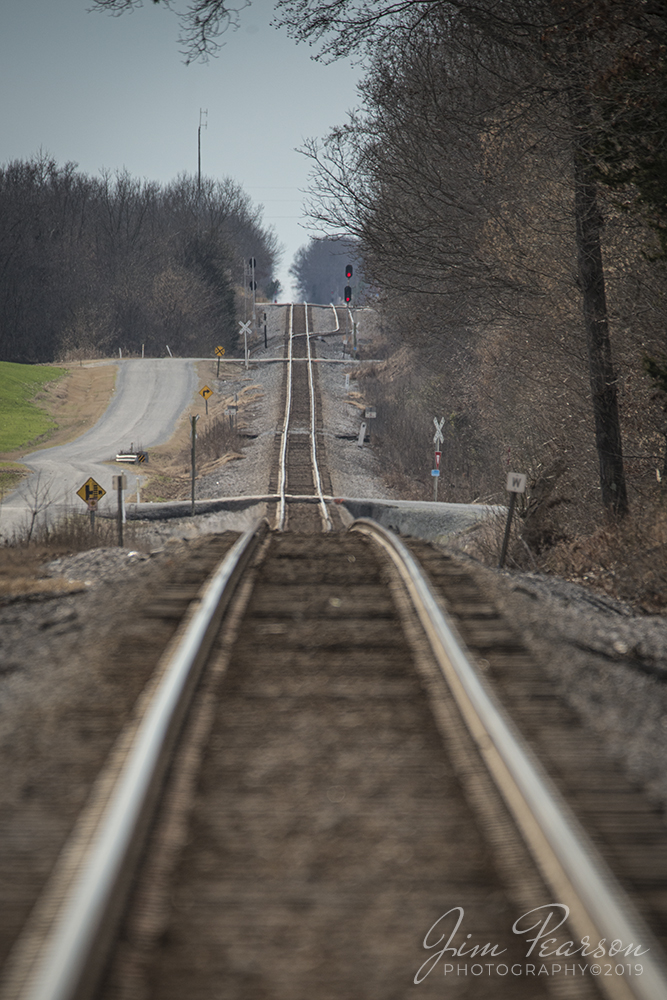January 18, 2020 – Canadian National 5654 leads the way on CSX K445 as it pulls up the grade at north end of Crofton, Ky as it heads south on the Henderson Subdivision with a loaded ethanol train.
CSX K628 makes for a nice reflection shot…
January 18, 2020 – CSX K628 makes for a nice reflection shot as it approaches the defect detector at Ace, just south of Guthrie, Kentucky, as it heads north on the Henderson Subdivision with CSXT 6468 leading a empty ethanol train.
Canadian National Ethanol Train CSX K445 heads up the grade at Pembroke, Ky…
January 18, 2020 – Canadian National Ethanol Train CSX K445 heads up the grade at Pembroke, Ky with CN 5654 leading the way as it heads south on the Henderson Subdivision.
CSXT 3096 leads loaded coal train N307…
January 9, 2020 – CSXT 3096 leads loaded coal train N307 as it passes the signals at the RR location known as poorhouse, as it heads south on the Henderson Subdivision at Madisonville, Ky.
This location got it’s name from the L&N Railroad days when the Hopkins County Poorhouse stood near here.
According to the Kentucky Historic Institutions website: In 1910 there were more than 84 thousand paupe… See More
RJ Corman’s Cumberland City local passes the TVA Cumberland power plant…
December 20, 2019 – RJ Corman’s Cumberland City local passes the TVA Cumberland power plant (coal delivered by barge) as it departs Cumberland City, Tennessee on its way back north on the Memphis Line, with RJC 3837 and 3801 leading, after completing its work in Cumberland City for the day.
Paducah and Louisville Railway 2121…
January 15, 2020 – Paducah and Louisville Railway 2121 leads the yard job as it works on moving cars just past the CN crossover in the yard at Paducah, Ky on a foggy morning.
RJ Corman’s Cumberland City turn local…
December 20, 2019 – RJ Corman’s Cumberland City turn local exits the bridge over the Cumberland River as it makes it’s return trip northbound on the Memphis Line at Clarksville, Tennessee with RJC 3801 and 3837 leading with their long noses forward elephant style for their return trip to Guthrie, KY.
It is a Swing through truss bridge and was constructed in 1891 by the Pencoyd Bridge & Construction Company for the Nashville, Chattanooga, and St. Louis Railway. It is still an operating bridge on the river and sees at most two trains a day, but most days only one. Trains head to Cumberland City, TN (SB) usually around 9:30am CST and return north on average about 2:30-3:30pm CST.
RSSX 3021 backs a couple cars into a track at the Kellogg plant in Jackson, Tennessee…
January 1, 2020 – RSSX 3021 backs a couple cars into a track at the Kellogg plant in Jackson, Tennessee as it does it’s work on New Years Day. The unit is leased from Rail Switching Service by the Kellogg Company and from what I can find online is it’s a GP30 that was rebuilt into a LEAF unit and was originally built as DRGW 3021 in February 1963.
According to Wikipedia: The Railserve Leaf is a g… See More
South Central Tennessee Railroad “The Duck River Route”
January 1, 2020 – South Central Tennessee Railroad “The Duck River Route” unit sits reflected in a pool of water next to the West Tennessee Railroad shops in Jackson, Tennessee on a quiet New Years Day.
CSX K443-06 (Chicago to Lawrenceville, GA)…
January 7, 2020 – CSX K443-06 (Chicago to Lawrenceville, GA), a Canadian Pacific loaded ethanol train, passes through the S Curve at Nortonville, Kentucky, with Canadian Pacific 8915, CP 8824 and CSX 5491 as power, as it heads south on the Henderson Subdivision.
Blast From The Past – October 20, 2015 – Cumbres & Toltec Scenic Railroad…
Blast From The Past – October 20, 2015 – Cumbres & Toltec Scenic Railroad Locomotive 484 sits next to the water tower at Chama, New Mexico, after the last day of scheduled revenue runs for the year. Chama is one of my favorite steam operations to photograph!
According to Wikipedia: The Cumbres & Toltec Scenic Railroad, often abbreviated as C&TSRR, is a 3 ft (914 mm) narrow-gauge heritage railroad running for 64 miles (103 km) between Antonito, Colorado and Chama, New Mexico, United States. The railroad gets its name from two geographical features along the route, the 10,015-foot (3,053 m)-high Cumbres Pass and the Toltec Gorge. Originally part of the Denver and Rio Grande Western Railroad’s narrow-gauge network, the line has been jointly owned by the states of Colorado and New Mexico since 1970.
The rail line over which the Cumbres & Toltec operates was constructed in 1881 by the Denver and Rio Grande Western Railroad (D&RGW) as part of their San Juan extension stretching from Alamosa, Colorado to Durango, Colorado. The line was originally built to support mining operations in the San Juan Mountains, mainly around Durango and Silverton. By the mid 20th century, the ore traffic had dwindled but the line continued to support various agricultural and industrial operations until the 1960s.
In 1968, freight traffic was virtually gone and the railroad began the process of abandoning the line. However, the states of Colorado and New Mexico purchased the 64 mile portion between Antonito and Chama in 1970 and began excursion services on the route as the Cumbres & Toltec Scenic Railroad.
The Cumbres & Toltec Scenic Railroad operates between late May and late October with two trains (one in each direction) departing each morning from Antonito and Chama. Both trains are timed to meet at Osier, an old section town located about halfway along the route, for a lunch stop. Afterwards, passengers continue with their train to its destination or switch trains to return to their original terminal. Through riders are returned to their starting place by motorcoach after the train arrives at its destination.
In addition to the through service, the C&TSRR operates various special excursions during the season such as dinner trains. On certain days during the holiday season, the railroad offers special “Santa Trains” from both Chama and Antonito and guests are encouraged to bring gifts and/or food for the less fortunate.
CSX K443-06 (Chicago to Lawrenceville, GA), a Canadian Pacific loaded ethanol train…
January 7, 2020 – CSX K443-06 (Chicago to Lawrenceville, GA), a Canadian Pacific loaded ethanol train, pulls onto the main from the Earlington Cutoff at Mortons Junction, with Canadian Pacific 8915, CP 8824 and CSX 5491 as power, as it heads south on the Henderson Subdivision at Mortons Gap, Ky.
On a very quiet New Years Day I waited and waited and…
January 1, 2020 – On a very quiet New Years Day I waited and waited and waited and waited and a train never appeared for this picture from a grade crossing around Gibson, Tennessee on the CSX Memphis Subdivision. Sometimes it happens, but the scene makes for a nice shot at 600mm!! I’ll revisit this spot with my long lens on a day there’s regular traffic for sure! Remember, there doesn’t always have to be a train to come back with a great picture!

